« Et laissez-moi vous dire quelque chose sur Saul Alinsky », poursuit Carson. « Il a écrit un livre intitulé Rules for Radicals. Il reconnaît Lucifer, le radical originel qui a gagné son propre royaume. Pensez-y maintenant. »
Ben Carson
Alinsky a été interrogé sur la reconnaissance de Lucifer dans son interview de mars 1972 avec le magazine Playboy vers la fin de sa vie, un chant du cygne que tous les adorateurs d’Alinsky connaissent. Voici l’échange, qui a eu lieu à la toute fin de l’interview :
Playboy : Ayant accepté votre propre mortalité, croyez-vous en une vie après la mort ?
Saul Alinsky : Il me semble parfois que la question que les gens devraient se poser n’est pas « Y a-t-il une vie après la mort » mais "Y a-t-il une vie après la naissance ? Je ne sais pas s’il y a quelque chose après cela ou non. Je n’ai pas vu les preuves d’une manière ou d’une autre et je pense que personne d’autre ne l’a vu non plus. Mais je sais que l’obsession de l’homme pour la question vient de son refus obstiné de faire face à sa propre mortalité. Disons que s’il y a une vie après la mort, et que j’ai mon mot à dire à ce sujet, je choisirai sans réserve d’aller en enfer.
Playboy : Pourquoi ?
Alinsy : L’enfer serait le paradis pour moi. Toute ma vie, j’ai été avec les pauvres. Ici, si vous êtes un pauvre, vous êtes à court d’argent. Si vous êtes un pauvre en enfer, vous êtes à court de vertu. Une fois en enfer, je commencerai à organiser les démunis là-bas.
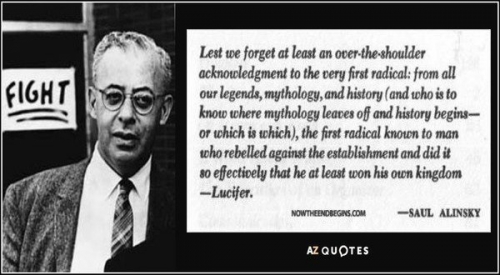
Saul Alinsky, la campagne présidentielle et l’histoire de la gauche américaine
Situé au croisement de la tradition du « self-made man » et de l’autogestion à l’américaine, Saul Alinsky est la figure de proue d’un mouvement qui a profondément marqué l’histoire du progressisme aux États-Unis. Michael C. Behrent dresse ici le portrait du père fondateur du community organizing, dont l’histoire a inspiré aussi bien Hillary Clinton que Barack Obama.
Les primaires démocrates viennent de se terminer aux États-Unis. Elles ont permis à l’opinion publique de mesurer la distance qui sépare les deux candidats, distance qui a tant mobilisé – au risque de la diviser – la gauche américaine. Mais au moment où cet affrontement-là cède la place à celui qui opposera Obama à McCain, revenons sur un héritage intellectuel et politique que les deux candidats démocrates partagent : l’enseignement de Saul Alinsky.
Si Alinsky est quasiment inconnu en France, c’est parce qu’il fut un militant et un penseur résolument américain – dans ses croyances, ses références et ses méthodes. Aux États-Unis, il est généralement reconnu comme le père fondateur du community organizing, terme que l’on pourrait traduire de manière approximative par « animation de quartier », mais dont le sens est à la fois plus politique et plus radical : il se réfère aux activités par lesquelles un animateur aide les habitants d’un quartier défavorisé à faire valoir leurs droits, que ce soit en exigeant de l’administration des HLM de mettre les logements sociaux aux normes sanitaires en vigueur, ou en demandant aux banques implantées dans le quartier d’offrir des taux d’intérêts plus raisonnables.
Né lui-même dans un ghetto de Chicago en 1909, Alinsky est issu d’une famille juive originaire de la Russie. Après des études à l’université de Chicago, il s’intéresse à la criminologie et obtient une bourse lui permettant de suivre de près la vie des gangs urbains : il développera ainsi une grande estime pour celui d’Al Capone, qu’il considère comme un vaste service public informel. Mais surtout, à partir de 1938, il trouve sa vocation lorsqu’il décide d’« organiser » le quartier Back of the Yards, le fameux ghetto dont les conditions de vie atroces ont été portées au grand jour par le roman d’Upton Sinclair, La Jungle (1905). C’est là qu’Alinksy mettra pour la première fois en œuvre des méthodes dont il fera plus tard un système. Son idée fondamentale : pour s’attaquer aux problèmes sociaux, il faut bâtir des « organisations populaires » (« People’s Organizations ») permettant aux populations de se mobiliser. Ces méthodes s’avéreront fructueuses aussi lorsqu’il organisa - toujours à Chicago - aux débuts des années soixante « The Woodlawn Organization » (TWO), du nom d’un quartier noir menacé par les efforts dits de « rénovation urbaine » de l’université de Chicago. Il fonda aussi l’Industrial Areas Foundation (IAF), une association où de nombreux futurs organizers (« animateurs de quartier ») apprendront la « méthode Alinsky » pour l’appliquer un peu partout dans le pays.
La « méthode Alinsky »
Bien qu’il fût avant tout un homme d’action, Alinsky tenta, dans plusieurs textes, d’expliquer les principes qui guident sa démarche. Son radicalisme puise ses racines dans l’histoire américaine – une histoire traversée avant tout par l’idée de la démocratie, qui a animé les penseurs radicaux américains depuis toujours, des révolutionnaires de Boston en 1776 jusqu’aux fondateurs du mouvement syndical, en passant par les jeffersoniens et les militants œuvrant pour l’abolition de l’esclavage. Citons-en trois principes qui constituent, pour lui, autant de tabous à lever :
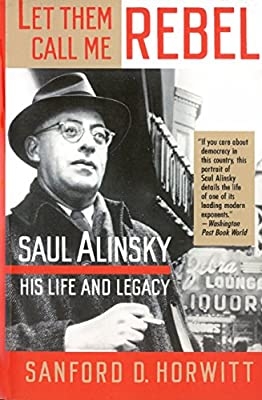 1) Le pouvoir. Alinsky est loin d’épouser une vision irénique de la démocratie. Le principe primordial de l’organizer est celui du pouvoir. Le pouvoir, soutient-il, est « l’essence même, la dynamo de la vie » (dans certains textes, il ira jusqu’à citer Nietzsche)
1) Le pouvoir. Alinsky est loin d’épouser une vision irénique de la démocratie. Le principe primordial de l’organizer est celui du pouvoir. Le pouvoir, soutient-il, est « l’essence même, la dynamo de la vie » (dans certains textes, il ira jusqu’à citer Nietzsche)
. « Aucun individu, aucune organisation ne peut négocier sans le pouvoir d’imposer la négociation ». Ou encore : « Vouloir agir sur la base de la bonne foi plutôt que du pouvoir, c’est de tenter quelque chose dont le monde n’a pas encore fait l’expérience—n’oubliez pas que pour être efficace, même la bonne foi doit être mobilisée en tant qu’élément de pouvoir ». Malheureusement, poursuit-il, la culture moderne tend à faire de « pouvoir » un gros mot ; dès qu’on l’évoque, « c’est comme si on ouvrait les portes de l’enfer. »
Surmontant ce moralisme gênant, l’organizer identifie le pouvoir dont une communauté dispose, pour ensuite lui montrer le plaisir à l’éprouver – pour ensuite, enfin, le manier à ses propres fins.
2) L’intérêt propre. Si le pouvoir est le but de l’organizer, son point d’appui est l’intérêt propre (self-interest), un autre terme considéré souvent comme tabou. Pour organiser une communauté, il doit faire appel à ses intérêts (et les convaincre qu’il n’y a pas de honte à agir sur cette base) tout en identifiant ceux des personnes qui y ont font obstacle. « Douter de la force de l’intérêt particulier, qui pénètre tous les domaines de la politique, insistera Alinsky, c’est refuser de voir l’homme tel qu’il est, de le voir seulement comme on souhaiterait qu’il soit ».
3) Le conflit. Mais puisque celui qui essaie de faire valoir son intérêt particulier se heurte souvent aux intérêts de quelqu’un d’autre, l’organizer doit accepter le conflit non seulement comme inéluctable, mais même comme désirable – car rien ne mobilise autant que l’antagonisme. Sa tâche doit être « de mettre du sel dans les plaies des gens de la communauté ; d’attiser les hostilités latentes de beaucoup, jusqu’au point où ils les expriment ouvertement ; de fournir un canal dans lequel ils puissent verser leurs frustrations passées… ».
Loin d’être un mal nécessaire, le conflit est « le noyau essentiel d’une société libre et ouverte ». Si la démocratie était un morceau de musique, selon Alinsky, « son thème majeur serait l’harmonie de la dissonance ».
Ces principes ne font que traduire, dans un langage théorique, les tactiques utilisées par Alinsky et ses disciples à Chicago et ailleurs. Puisque l’organizer cherche avant tout à faire prendre conscience aux laissés-pour-compte de leur propre pouvoir, sa première tâche, lorsqu’il arrive dans une communauté, est de repérer ceux qui sont susceptibles de la mobiliser, en faisant appel aux « leaders locaux ». Alinsky travaillait ainsi beaucoup aussi avec les églises, qui constituent souvent la colonne vertébrale des quartiers défavorisés aux Etats-Unis, et entretenait notamment d’excellentes relations avec l’Eglise catholique (dans une lettre à Jacques Maritain, Alinsky ira jusqu’à dire, avec son sens d’humour habituel, qu’il est le deuxième juif le plus influent dans l’histoire du christianisme...).
L’organizer doit, d’autre part, écouter patiemment les habitants pour pouvoir identifier leurs problèmes. Une fois une tâche identifiée, plusieurs méthodes peuvent s’imposer. Pour faire bouger une administration, les habitants peuvent rassembler des informations gênantes et menacer de les distribuer à la presse, ou inviter un responsable municipal à une réunion de quartier pour lui faire part de leur grief. Mais ils peuvent également opter pour des méthodes plus rudes. Pour dénoncer l’insuffisance de l’administration, par exemple, ils peuvent faire pression sur la municipalité en organisant une grève d’impôts, ou encore débarquer en masse dans les bureaux d’un fonctionnaire, refusant de partir avant que celui-ci ne leur accorde, sur-le-champ, la réunion tant de fois reportée (de préférence, sous le regard des caméras de télévision locale). Ou encore : faire un sit-in dans les locaux d’une banque fréquentée par un propriétaire malhonnête ou dans ceux d’une compagnie d’assurances qui pénalise les quartiers défavorisés ; déposer des sacs d’ordures devant une agence de santé dont on estime qu’elle ne remplit pas ses obligations ; manifester devant la maison du propriétaire des taudis de banlieue ; ou encore, se coucher devant les bulldozers lorsque la municipalité se lance dans la rénovation urbaine sans l’approbation des personnes concernées...
La « méthode Alinsky » exerça une influence considérable sur le militantisme et les formes de contestation sociale aux Etats-Unis, tant par son propre travail (notamment à travers l’Industrial Areas Foundation et la Woodlawn Organization) que par les « organizers » qu’il a formés et les associations qui ont suivi son exemple. Parmi ceux passés par son école figure en particulier César Chávez, le militant pour les droits civiques et le fondateur des United Farm Workers, le syndicat qui a organisé la célèbre « grève des raisins » en Californie en 1965.
Cependant, Alinsky a toujours été un personnage controversé dans l’histoire du mouvement social américain - réputation, d’ailleurs, qu’il entretenait lui-même avec enthousiasme. Certains le considéraient comme trop radical et trop diviseur, tandis que d’autres — surtout le mouvement étudiant des années soixante — étaient gênés par son réformisme et son apathie idéologique. De son côté, il ne cachait pas son mépris pour des organisations comme Students for a Democratic Society (SDS) ou le Student Nonviolent Coordinating Committee (SNCC) : de Jerry Rubin et Abbie Hoffman, les leaders des « Yippies » (Youth International Party). Il disait qu’ils n’étaient « pas fichus d’organiser un déjeuner, encore moins une révolution ».
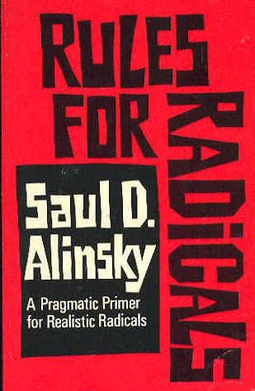 Surtout, Alinsky reconnaissait que les valeurs dénoncées par cette jeunesse en colère étaient justement celles auxquelles les pauvres pour lesquels il a milité aspiraient : en 1967, il remarquera : « Les gosses du SDS me disent : ‘Alinsky, tu sais ce que tu fais ? Tu organises les pauvres au nom de valeurs décadentes, ruinées, bourgeoises, et matérialistes.’ Et je me trouve en train de répondre : ‘Vous savez ce qu’ils veulent, les pauvres, dans ce pays ? Ils veulent une part plus grande dans ces valeurs décadentes, ruinées, bourgeoises ».
Surtout, Alinsky reconnaissait que les valeurs dénoncées par cette jeunesse en colère étaient justement celles auxquelles les pauvres pour lesquels il a milité aspiraient : en 1967, il remarquera : « Les gosses du SDS me disent : ‘Alinsky, tu sais ce que tu fais ? Tu organises les pauvres au nom de valeurs décadentes, ruinées, bourgeoises, et matérialistes.’ Et je me trouve en train de répondre : ‘Vous savez ce qu’ils veulent, les pauvres, dans ce pays ? Ils veulent une part plus grande dans ces valeurs décadentes, ruinées, bourgeoises ».
Les associations d’inspiration alinskienne travaillaient en collaboration avec les pouvoirs publics voire les chefs d’entreprise (Marshall Field III, le millionnaire de Chicago, siégea par exemple dans le conseil de direction de l’IAF) plutôt que s’engager dans une lutte « gauchiste ». Son héritage, partagé entre ses tactiques de dissident et des instincts foncièrement réformiste, est donc complexe.
Alinsky, Clinton et la critique du welfare
A l’automne 1968, alors que l’Amérique ne s’est pas encore remise des assassinats de Marin Luther King et de Robert Kennedy, et qu’elle a encore en tête les images des émeutes qui ont éclatées lors de la convention démocrate de Chicago, portant ainsi au grand jour l’opposition à la guerre au Vietnam, une étudiante de Wellesley College, âgée de vingt-deux ans, férue de politique et de justice sociale, décide de consacrer son mémoire de fin d’études à Saul Alinksy. Elle s’appelle encore Hillary Rodham. Dans son mémoire, qu’elle intitule (en citant T. S. Eliot) There is only the fight : an analysis of the Alinsky model, la future candidate à l’investiture démocrate médite la pensée et la carrière d’Alinsky – et, en passant, égrène quelques brins de sa propre vision politique, à l’époque encore en gestation. Au moins laisse-t-elle entrevoir ses préoccupations.
Alinsky la fascine autant par sa soif insatiable de la justice que par sa critique acerbe de la morale chrétienne version middle class, dans laquelle la jeune Hillary a baigné pendant son enfance et qui fait peu de place aux notions comme le pouvoir, le conflit et l’intérêt particulier. D’autre part, Alinsky est à la fois radical et réformiste. Elle remarque que ce qu’il professe « ne sonne pas très ‘radical.’ Ses paroles sont les mêmes que l’on entend dans nos écoles, chez nos parents et leurs amis, chez nos pairs ». Mais elle souligne : « La différence, c’est qu’Alinsky y croit vraiment ».
La possibilité de fonder une contestation sur des principes globalement reconnus est sans doute attirant pour une jeune femme tentée par les grandes luttes des sixties, mais qui choisit de rester dans le « système ». Enfin, Hillary porte un intérêt manifeste pour la place centrale qu’Alinsky accorde à la notion de « communauté ». Le problème qui hante sa pensée est celle « de la quête d’une communauté viable ».
En particulier, il nous oblige à penser ce que signifie une « communauté » à l’âge de l’industrialisation et de la société de masse – si, dans ce contexte, une communauté peut encore exister. Alinsky, qu’Hillary rencontre en complétant son mémoire, est impressionné par la jeune étudiante : il lui propose de venir travailler pour son association. Elle refusera, décidant plutôt de poursuivre des études de droit à Yale (où elle fera la connaissance d’un certain Bill Clinton…).
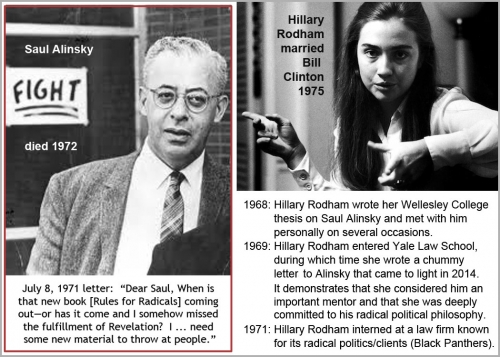
Alinsky n’aura-t-il été qu’un intérêt passager d’une jeune étudiante passionnée par la politique ? Peut-être. On peut néanmoins considérer la carrière d’Hillary Clinton à la lumière de cet engouement estudiantin pour le community organizer. Son intérêt pour la notion de communauté et les valeurs de solidarité qu’elle véhicule se retrouveront, par exemple, dans son militantisme en faveur des droits de l’enfant et de l’assurance sociale. D’autre part, le pragmatisme d’Alinksy, ainsi que son allergie aux idéologies, rejoignent curieusement les valeurs de la « troisième voie » clintonienne. Clinton remarque ainsi dans son mémoire qu’Alinsky s’intéresse à l’idée d’appliquer ses méthodes à la classe moyenne américaine qui, elle aussi, éprouve un sentiment d’impuissance (powerlessness) devant « ces guerres que l’on suit sur les écrans de télévision ».
Mobilier la classe moyenne – n’est-ce pas ce que tentent les époux Clinton dans les années 1990, lorsqu’ils repartent à la conquête des couches sociales que leur parti semble avoir abandonné ? D’autre part, tout en militant pour les plus pauvres, Alinsky ne cache pas sa suspicion à l’égard de l’Etat-providence, surtout à l’égard de la « guerre contre la pauvreté » menée par le Président Lyndon Johnson dans les années 1960, qu’il qualifiera de « pornographie politique ». Alinsky se vantait de n’avoir jamais rien fait pour les pauvres, comme voulaient le faire les bureaucrates bien-pensants de Washington : il n’a fait que travailler avec eux, les aidant à chercher eux-mêmes des solutions à leurs problèmes.
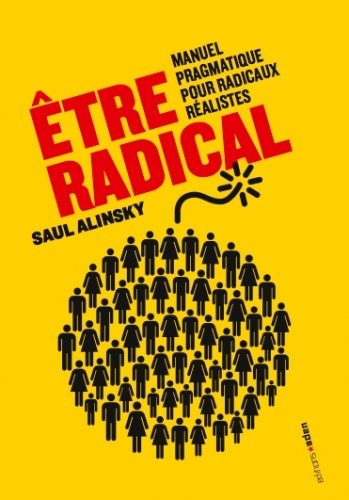 Situé au croisement de la tradition du « self-made man » et d’une sorte d’autogestion à l’américaine, Alinsky insiste toujours sur la nécessité des pauvres de pourvoir à leurs intérêts, mêmes « bourgeois » et « décadents », et nourrit un profond mépris pour les « libéraux » (au sens américain du terme, donc la gauche) qui, en prétendant connaître les intérêts profonds des couches sociales démunies, ne font que les infantiliser. Mais de là à rejoindre les critiques libérales (au sens européen) de l’Etat-providence ? Rappelons qu’en 1996, le président Clinton, appuyé par les Républicains, adopta la loi sur la « responsabilité personnelle » (Personal Responsibility and Work Opportunity Reconciliation Act, PRWORA), qui supprima de nombreuses allocations destinées aux plus démunis (en particulier celles destinées aux enfants), en les remplaçant, au niveau des Etats fédérés, par une politique dite de « workfare », qui lie le droit aux prestations sociales à l’obligation de travailler (même dans des conditions indignes). Clinton annonça à cette occasion que « l’ère du big government » est terminé aux Etats-Unis. En dépit de son engagement profond pour les pauvres, Alinsky et sa méthode ne constituent-ils pas, par le biais de leur critique des aides gouvernementales au nom du savoir-faire spontané de la communauté, la voie détournée vers le « workfare » ?
Situé au croisement de la tradition du « self-made man » et d’une sorte d’autogestion à l’américaine, Alinsky insiste toujours sur la nécessité des pauvres de pourvoir à leurs intérêts, mêmes « bourgeois » et « décadents », et nourrit un profond mépris pour les « libéraux » (au sens américain du terme, donc la gauche) qui, en prétendant connaître les intérêts profonds des couches sociales démunies, ne font que les infantiliser. Mais de là à rejoindre les critiques libérales (au sens européen) de l’Etat-providence ? Rappelons qu’en 1996, le président Clinton, appuyé par les Républicains, adopta la loi sur la « responsabilité personnelle » (Personal Responsibility and Work Opportunity Reconciliation Act, PRWORA), qui supprima de nombreuses allocations destinées aux plus démunis (en particulier celles destinées aux enfants), en les remplaçant, au niveau des Etats fédérés, par une politique dite de « workfare », qui lie le droit aux prestations sociales à l’obligation de travailler (même dans des conditions indignes). Clinton annonça à cette occasion que « l’ère du big government » est terminé aux Etats-Unis. En dépit de son engagement profond pour les pauvres, Alinsky et sa méthode ne constituent-ils pas, par le biais de leur critique des aides gouvernementales au nom du savoir-faire spontané de la communauté, la voie détournée vers le « workfare » ?
La principale leçon que les Clinton retiendront d’Alinsky est cependant sa vision du pouvoir. L’analyse qu’ils font de l’expérience des années 1960, de l’ère Nixon et du scandale de Watergate, mais aussi du déclin du Parti démocrate à l’époque de Reagan, est précisément celle d’Alinsky : la noblesse des principes ne vaut strictement rien sans le pouvoir. Alinsky s’en prend à ceux qu’il appelle les « liberals » (et qu’il oppose aux « radicals »), c’est-à-dire ceux pour qui tous les moyens ne peuvent pas être justifiés par la noblesse du but. Railleur, Alinsky cite La Rochefoucauld : « Nous avons tous assez de force pour supporter les maux d’autrui ».
Lorsque les Clinton se défendent contre ceux qui leur reprochent de vouloir accaparer le pouvoir à tout prix, on peut imaginer que ce proverbe est leur réplique secrète. Dans son mémoire, Hillary Clinton note avec intérêt que selon Alinsky, contrairement à l’idée reçue, rien n’est plus facile en politique que d’être moral : « Il y a deux voies qui mènent à tout : la voie basse et la voie haute. La voie haute est la plus facile. Il suffit à parler des principes et de se montrer angélique à l’égard des choses que l’on ne pratique point. La voie basse est plus la rude. C’est la tâche de faire ressortir une conduite morale de son intérêt personnel ».
Cela aurait pu être la devise de la campagne menée par Hillary Clinton contre Obama : il ne suffit pas d’inspirer les auditeurs par des belles phrases et par son éloquence ; la politique est l’art des résultats ; s’il faut être méchant et déshonnête pour faire un peu de bien, s’il faut être un peu démagogue pour mobiliser la rage des démunis, soit.
Alinsky dans le parcours d’Obama
Le paradoxe, pourtant, c’est que celui que Clinton accuse d’être trop idéaliste est passé par la même école qu’elle. En 1985, Barack Obama, ayant tout juste reçu son diplôme de Columbia, désirant participer au changement social dans le même esprit que les luttes pour les droits civiques des années 1960, mais ne sachant trop comment, répond à une publicité publiée dans le New York Times par le Calumet Community Religious Conference (CCRC). Cette association, qui cherche à faire des églises dans le South Side de Chicago, le célèbre ghetto noir, des forces militantes, est animée par plusieurs disciples d’Alinksy (Mike Kruglik, Gregory Galluzzo et Gerald Kellman) qui veulent recruter des jeunes noirs pour gagner la confiance d’une communauté qui les regarde (ils sont blancs et pour la plupart juifs) avec méfiance.
Agé tout juste de vingt-quatre ans, Obama arrive dans le South Side. Aussitôt, il reçoit son baptême du feu d’organizer, aidant une communauté à obtenir un bureau de placement pour les chômeurs, ou encore portant son soutien aux efforts des résidents d’un HLM pour obtenir le désamiantage de leurs logements.
Obama consacre presque deux cents pages à cet épisode dans ses mémoires, Dreams from my father. Certes, comme l’observe le journaliste Ryan Lizza, « il n’y aucune discussion de la théorie qui sous-tendait son travail et qui guida ses maîtres. Alinsky est la couche absente de ce récit ».
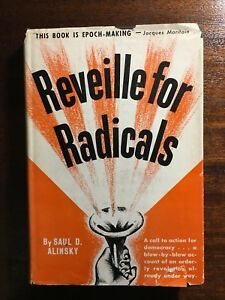 Mais Obama évoque le pouvoir de séduction qu’exerça sur lui le langage alinskien au cours de sa formation comme organizer : « L’action, le pouvoir, l’intérêt particulier. J’aimais ces concepts. Ils témoignaient d’un certain réalisme, d’un refus temporel pour le sentiment ; la politique, et non la religion ».
Mais Obama évoque le pouvoir de séduction qu’exerça sur lui le langage alinskien au cours de sa formation comme organizer : « L’action, le pouvoir, l’intérêt particulier. J’aimais ces concepts. Ils témoignaient d’un certain réalisme, d’un refus temporel pour le sentiment ; la politique, et non la religion ».
A son tour, Obama enseignera à d’autres la méthode que la CCRC lui a apprise.
Toutefois, même si son nom n’est jamais mentionné, les mémoires d’Obama contiennent une critique implicite d’Alinsky – partielle, sans doute, et pourtant claire. D’abord, Obama, dans le South Side, suggère qu’il arrive parfois aux organizers de surestimer l’importance de l’intérêt particulier – ou, du moins, qu’ils le conçoivent de manière trop étroite. Les motivations des résidents du South Side qu’il mobilisa dépassaient le simple intérêt matériel ; ils étaient aussi animés par un intérêt spirituel, ou plutôt un désir de sens, une capacité d’offrir un récit significatif de leur identité. Il apprend que « l’intérêt particulier que j’étais sensé chercher s’étendait bien au-delà des problèmes immédiats, qu’au delà des banalités, des biographies sommaires, et des idées reçues, les gens portent dans leur for intérieur une explication essentielle d’eux-mêmes. Des histoires pleines de terreur et de merveilles, clouées d’événements qui les hantent ou les inspirent encore. Des histoires sacrées ».
Ce qui commence, pour Alinsky, en politique, finit chez Obama en mystique.
La méthode d’Alinsky est mise en question par Obama à un autre niveau encore. Alinsky, nous l’avons vu, assume sans regret le fait que la politique entraîne le conflit, et que la stigmatisation de l’autre peut être une puissante force de mobilisation. Mais quel sens cette idée peut-elle avoir pour une communauté qui vit quotidiennement la conséquence d’une telle stigmatisation - en l’occurrence, la communauté noire américaine ? Une réaction tout à fait logique, qu’Obama rencontre au South Side, est le nationalisme noir, qui assume la stigmatisation, mais en la projetant sur les blancs. Obama développera plus tard un certain respect pour cette attitude, surtout lorsqu’il se rendra compte à quel point les Noirs ont intégré le racisme dont ils sont victimes. La haine des Blancs constitue, pour les Noirs, un « contre-récit enfouit profondément à l’intérieur de chacun, au centre duquel se trouvent des Blancs : certains cruels, d’autres ignorants, parfois un seul visage, parfois l’image anonyme d’un système qui prétend contrôler nos vies. J’étais forcé de me demander si les liens de communauté pouvait être restauré sans un exorcisme collectif de la figure spectrale qui hantait les rêves noirs ».
Mais surtout, il finira par conclure que la haine, même justifiée, est sans issue. Il acceptera, en quelque sorte, la psychologie d’Alinsky, mais pas sa politique.
Ce qu’enseigne, en fin de compte, l’école d’Alinsky, est un mélange de romantisme et de rudesse, d’une soif pour la justice atteinte par des moyens impitoyables. Hillary Clinton semble y avoir puisé pour formuler sa vision non-idéologique du progrès social, tout en tenant fortement compte de sa leçon sur la centralité du pouvoir et de sa conquête, nécessaires à toute politique digne de son nom. Barack Obama, en appliquant la méthode d’Alinsky à Chicago, cherche à donner aux impuissants une preuve de leur propre puissance—tout en critiquant l’intérêt conçu en dehors de toute visée spirituelle, en même temps qu’il se méfie des conséquences de la stigmatisation d’autrui dans la poursuite du pouvoir.
Mais que se passe-t-il lorsque les enfants d’Alinsky passent à la politique politicienne ? Citons le maître : « Le moi de l’organizer est plus fort et plus monumental que le moi du leader. Le leader est poussé par un désir pour le pouvoir, tandis que l’organizer est poussé par un désir de créer. L’organizer essaie dans un sens profond d’atteindre le plus haut niveau qu’un homme puisse atteindre—créer, être ‘grand créateur,’ jouer à être Dieu ».
Aux supporters d’Obama et d’Hillary de reconnaître leur candidat dans cette phrase…
Michael C. Behrent , le 10 juin 2008






 del.icio.us
del.icio.us
 Digg
Digg



 The Carter Administration was not happy with this, sending Vice President Walter Mondale (picture) to France and West Germany to "inform" them that the U.S. would henceforth oppose the sale of nuclear energy technology to the Third World...and thus they should do so as well. West Germany's
The Carter Administration was not happy with this, sending Vice President Walter Mondale (picture) to France and West Germany to "inform" them that the U.S. would henceforth oppose the sale of nuclear energy technology to the Third World...and thus they should do so as well. West Germany's 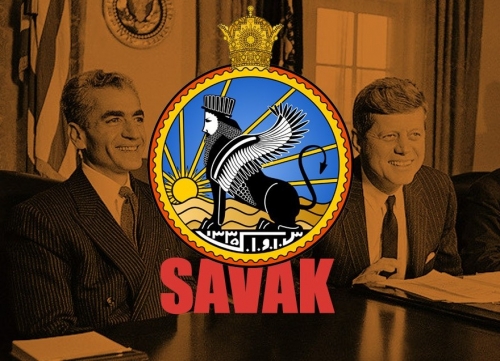
 On Jan 4th, 1979, the Shah named Shapour Bakhtiar (picture), a respected member of the National Front, as Prime Minister of Iran. Bakhtiar was held in high regard by not only the French but Iranian nationalists. As soon as his government was ratified, Bakhtiar began pushing through a series of major reform acts: he completely nationalised all British oil interests in Iran, put an end to the martial law, abolished the SAVAK, and pulled Iran out of the Central Treaty Organization, declaring that Iran would no longer be "the gendarme of the Gulf".
On Jan 4th, 1979, the Shah named Shapour Bakhtiar (picture), a respected member of the National Front, as Prime Minister of Iran. Bakhtiar was held in high regard by not only the French but Iranian nationalists. As soon as his government was ratified, Bakhtiar began pushing through a series of major reform acts: he completely nationalised all British oil interests in Iran, put an end to the martial law, abolished the SAVAK, and pulled Iran out of the Central Treaty Organization, declaring that Iran would no longer be "the gendarme of the Gulf". 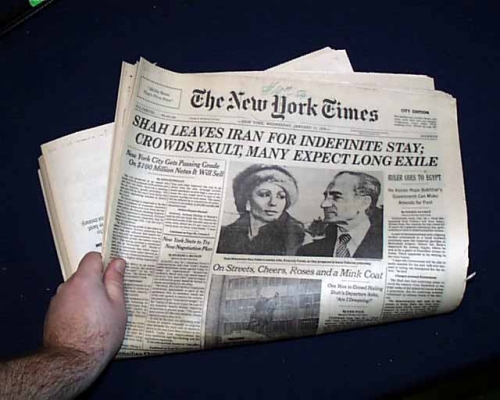





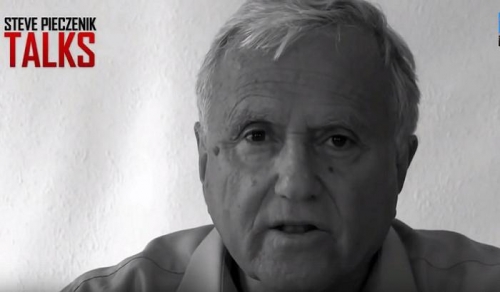
 Et ce « Contre-coup » d'État, en réponse à cette tentative de coup d'État « en douce », ce fut la victoire du Président Trump. À vrai dire pas uniquement, puisque cette victoire du Président Trump ne signifia en fait que le début d'une épuration antisubversive de longue haleine aux États-Unis, laquelle a eu lieu en coulisses depuis maintenant quatre ans (2016-2020), et n'est certainement pas terminée... Mais cette victoire de Trump fut l'élément historique qui rendit possible une Restauration de la République américaine, en forme de Seconde Révolution américaine dans « l'esprit de 1776 »[7].
Et ce « Contre-coup » d'État, en réponse à cette tentative de coup d'État « en douce », ce fut la victoire du Président Trump. À vrai dire pas uniquement, puisque cette victoire du Président Trump ne signifia en fait que le début d'une épuration antisubversive de longue haleine aux États-Unis, laquelle a eu lieu en coulisses depuis maintenant quatre ans (2016-2020), et n'est certainement pas terminée... Mais cette victoire de Trump fut l'élément historique qui rendit possible une Restauration de la République américaine, en forme de Seconde Révolution américaine dans « l'esprit de 1776 »[7]. 
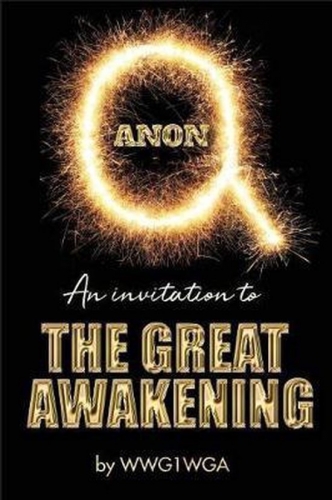 Pourtant, des voix s'élevèrent en effet en Occident, face à l'hystérie collective soudaine que suscita l'emballement médiatique en Occident. Face aux médias clamant à l'unisson l'extrême dangerosité du coronavirus, pour légitimer des mesures de contrôle des populations tellement extrêmes qu'elles rappelaient les totalitarismes du XXe siècle. Aux États-Unis notamment, par la voix du Président Trump lui-même[21] et de Qanon, la voix occulte des patriotes américains[22]. Au Québec avec le média patriote Radio Québec, et même quelques personnages publics courageux qui eurent le cran de prendre publiquement position[23]. En Allemagne également, avec notamment la lettre ouverte du Professeur Sucharit Bhakdi à la Chancelière Angela Merkel[24]. En France, enfin, avec ce qui constituera certainement le plus gros scandale d'État depuis l'affaire dite du « sang contaminé », durant les années 1980.
Pourtant, des voix s'élevèrent en effet en Occident, face à l'hystérie collective soudaine que suscita l'emballement médiatique en Occident. Face aux médias clamant à l'unisson l'extrême dangerosité du coronavirus, pour légitimer des mesures de contrôle des populations tellement extrêmes qu'elles rappelaient les totalitarismes du XXe siècle. Aux États-Unis notamment, par la voix du Président Trump lui-même[21] et de Qanon, la voix occulte des patriotes américains[22]. Au Québec avec le média patriote Radio Québec, et même quelques personnages publics courageux qui eurent le cran de prendre publiquement position[23]. En Allemagne également, avec notamment la lettre ouverte du Professeur Sucharit Bhakdi à la Chancelière Angela Merkel[24]. En France, enfin, avec ce qui constituera certainement le plus gros scandale d'État depuis l'affaire dite du « sang contaminé », durant les années 1980. 
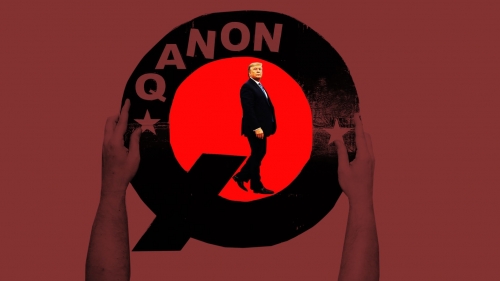

 Et à présent, cette même entente russo-américaine occulte, qui remonte à Lincoln et dont on trouve d'autres traces bien peu comprises dans l'histoire, se renouvelle sous nos yeux. Non pas par cette pantalonnade ridicule du « complot russe », qui aurait prétendument abouti à la victoire de Trump de 2016, fondée sur la fable du « rapport Steele » qui reviendra brutalement contre ses instigateurs bientôt, et restera dans l'Histoire comme l'Obamagate...[42] Mais c'est bien à l'occasion de cette crise du coronavirus que par nécessité, un axe occulte russo-américain va perdurer, plein de réalisme face au danger qui menace tant la Russie que les États-Unis en tant qu'États souverains.
Et à présent, cette même entente russo-américaine occulte, qui remonte à Lincoln et dont on trouve d'autres traces bien peu comprises dans l'histoire, se renouvelle sous nos yeux. Non pas par cette pantalonnade ridicule du « complot russe », qui aurait prétendument abouti à la victoire de Trump de 2016, fondée sur la fable du « rapport Steele » qui reviendra brutalement contre ses instigateurs bientôt, et restera dans l'Histoire comme l'Obamagate...[42] Mais c'est bien à l'occasion de cette crise du coronavirus que par nécessité, un axe occulte russo-américain va perdurer, plein de réalisme face au danger qui menace tant la Russie que les États-Unis en tant qu'États souverains. 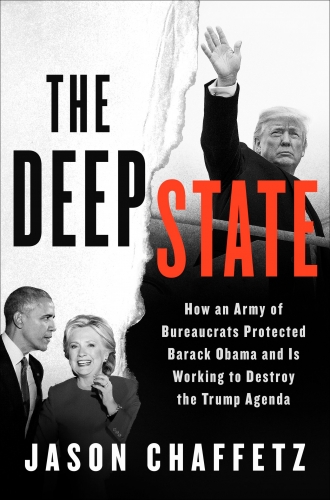 Si j'étais citoyen Américain, je serais très vraisemblablement accusé par Joe Biden de n'être « pas musulman » si je décidais de voter pour Donald Trump. Mais que lui répondrais-je ? Que les vrais musulmans savent ce qu'il s'est passé à Benghazi, et plus globalement durant toute l'époque de subversion des Clinton, Bush Jr. et Obama. Ils savent aussi qui a voulu créer une immigration déstabilisante pour les États-Unis depuis 1965 afin de ruiner leur modèle d'intégration vertueux par l'excellence, avec une pure volonté de subversion qui fut parfaitement identifiable sous l'ère Obama[50]. De même, les musulmans n'ignorent pas non plus les turpitudes personnelles transgressives de « creepy » Joe, et dès lors, ne sauraient accepter toute prétention de son auguste personne à leur donner des leçons de maintien et de morale. Pour toutes ces raisons, les hommes de bien musulmans, au même titre que les chrétiens américains, ne peuvent que se réjouir à l'avance de sa future défaite lors de la réélection à venir du Président Trump...
Si j'étais citoyen Américain, je serais très vraisemblablement accusé par Joe Biden de n'être « pas musulman » si je décidais de voter pour Donald Trump. Mais que lui répondrais-je ? Que les vrais musulmans savent ce qu'il s'est passé à Benghazi, et plus globalement durant toute l'époque de subversion des Clinton, Bush Jr. et Obama. Ils savent aussi qui a voulu créer une immigration déstabilisante pour les États-Unis depuis 1965 afin de ruiner leur modèle d'intégration vertueux par l'excellence, avec une pure volonté de subversion qui fut parfaitement identifiable sous l'ère Obama[50]. De même, les musulmans n'ignorent pas non plus les turpitudes personnelles transgressives de « creepy » Joe, et dès lors, ne sauraient accepter toute prétention de son auguste personne à leur donner des leçons de maintien et de morale. Pour toutes ces raisons, les hommes de bien musulmans, au même titre que les chrétiens américains, ne peuvent que se réjouir à l'avance de sa future défaite lors de la réélection à venir du Président Trump... 

 On voit encore d'autres traces de cette subversion, quand la BBC s'obstine à réécrire sans cesse l'Histoire occidentale dans un sens « antiraciste », en faisant jouer les personnages européens par des immigrés d'origine africaine.[60] Ceci est visible dans tous les pays occidentaux, jusqu'au ridicule quand Lancelot[61], Achille[62] ou Louis XIV[63] sont joués alors par des acteurs noirs. On attend avec impatience une histoire de Nelson Mandela, de Martin Luther King ou de l'Empereur Kanga Moussa du Mali joués par des acteurs blancs, afin d'être sûr que personne ne soit choqué par ces réécritures de l'Histoire ridiculement parasitées par des partis-pris idéologiques...
On voit encore d'autres traces de cette subversion, quand la BBC s'obstine à réécrire sans cesse l'Histoire occidentale dans un sens « antiraciste », en faisant jouer les personnages européens par des immigrés d'origine africaine.[60] Ceci est visible dans tous les pays occidentaux, jusqu'au ridicule quand Lancelot[61], Achille[62] ou Louis XIV[63] sont joués alors par des acteurs noirs. On attend avec impatience une histoire de Nelson Mandela, de Martin Luther King ou de l'Empereur Kanga Moussa du Mali joués par des acteurs blancs, afin d'être sûr que personne ne soit choqué par ces réécritures de l'Histoire ridiculement parasitées par des partis-pris idéologiques...  Depuis la victoire de Trump aux Etats-Unis et le net reflux de la pédocriminalité outre-Atlantique, la France passe de plus en plus pour le premier Etat pédocriminel au monde... Au point de susciter la préoccupation d'INTERPOL et d'EUROPOL. En France, chaque année, 58 000 enfants disparaissent et plus de 150.000 enfants sont violés[69], alors qu'à peine 0,3 % des agressions sexuelles sur mineurs sont condamnées ! C'est ainsi que l'on détruit la substance et l'avenir d'un peuple, et les Français qui tentent de protéger leurs enfants sont bâillonnés, dénigrés, voire accusés lorsqu'ils osent évoquer ce sujet. Selon Me Marie Grimaud, avocate pénaliste de l'association « Innocence en danger », « La France est l'eldorado des pédophiles. [...] Je le répète, aujourd'hui mieux vaut violer un enfant que de dealer du shit dans la rue. La sanction est beaucoup plus lourde pour le dealer que pour le violeur d'enfants ». Pire, elle rappelle que « si des magistrats estiment qu'un enfant de 5 à 6 ans peut éventuellement consentir à un rapport sexuel et éventuellement relaxer des individus pour cela, c'est que nous avons un problème dans la formation de nos magistrats. C'est ce que j'appelle la gouvernance des juges, qui va en deçà [au-delà] de ce que la loi prévoit »[70]. Djamila Allaf, directrice de l'association « Enfance au cœur », renchérit : en France, « les chiffres de la maltraitance des enfants sont terrifiants. Ils sont indignes d'une société qui se dit civilisée. Parce que le marqueur d'une civilisation, c'est sa capacité à protéger les plus faibles. Aujourd'hui, dans un pays comme la France, qui se dit pays des Droits de l'Homme, qui donne des leçons dans le monde entier, il y a 422 enfants qui sont violés chaque jour, 2 enfants qui meurent de maltraitance par jour. Et malgré cela on a toujours un silence sur cette question, ça reste tabou »[71]. Dans le contexte de l'Affaire d'Outreau, qui a défrayé la chronique, qui a fait énormément de mal à la cause des enfants en discréditant leur parole, une remarquable enquête non médiatisée d'un journaliste de l'AFP[72], rappelait qu'aucun enfant de l'affaire d'Outreau n'avait menti. Douze enfants ont bien été reconnus victimes de violences sexuelles dans un contexte de proxénétisme. Alors pourquoi leurs bourreaux ont-ils été protégés ? Était-ce un réseau susceptible de révéler des noms connus ? En tout cas, la France n'en sort pas grandie...et les enfants français continuent d'être torturés ![73]
Depuis la victoire de Trump aux Etats-Unis et le net reflux de la pédocriminalité outre-Atlantique, la France passe de plus en plus pour le premier Etat pédocriminel au monde... Au point de susciter la préoccupation d'INTERPOL et d'EUROPOL. En France, chaque année, 58 000 enfants disparaissent et plus de 150.000 enfants sont violés[69], alors qu'à peine 0,3 % des agressions sexuelles sur mineurs sont condamnées ! C'est ainsi que l'on détruit la substance et l'avenir d'un peuple, et les Français qui tentent de protéger leurs enfants sont bâillonnés, dénigrés, voire accusés lorsqu'ils osent évoquer ce sujet. Selon Me Marie Grimaud, avocate pénaliste de l'association « Innocence en danger », « La France est l'eldorado des pédophiles. [...] Je le répète, aujourd'hui mieux vaut violer un enfant que de dealer du shit dans la rue. La sanction est beaucoup plus lourde pour le dealer que pour le violeur d'enfants ». Pire, elle rappelle que « si des magistrats estiment qu'un enfant de 5 à 6 ans peut éventuellement consentir à un rapport sexuel et éventuellement relaxer des individus pour cela, c'est que nous avons un problème dans la formation de nos magistrats. C'est ce que j'appelle la gouvernance des juges, qui va en deçà [au-delà] de ce que la loi prévoit »[70]. Djamila Allaf, directrice de l'association « Enfance au cœur », renchérit : en France, « les chiffres de la maltraitance des enfants sont terrifiants. Ils sont indignes d'une société qui se dit civilisée. Parce que le marqueur d'une civilisation, c'est sa capacité à protéger les plus faibles. Aujourd'hui, dans un pays comme la France, qui se dit pays des Droits de l'Homme, qui donne des leçons dans le monde entier, il y a 422 enfants qui sont violés chaque jour, 2 enfants qui meurent de maltraitance par jour. Et malgré cela on a toujours un silence sur cette question, ça reste tabou »[71]. Dans le contexte de l'Affaire d'Outreau, qui a défrayé la chronique, qui a fait énormément de mal à la cause des enfants en discréditant leur parole, une remarquable enquête non médiatisée d'un journaliste de l'AFP[72], rappelait qu'aucun enfant de l'affaire d'Outreau n'avait menti. Douze enfants ont bien été reconnus victimes de violences sexuelles dans un contexte de proxénétisme. Alors pourquoi leurs bourreaux ont-ils été protégés ? Était-ce un réseau susceptible de révéler des noms connus ? En tout cas, la France n'en sort pas grandie...et les enfants français continuent d'être torturés ![73] 
 Le regretté Pierre Schoendoerfer considérait qu'un soldat avait pour devoir sacré de « mettre de l'ordre dans le désordre ». Le général Michael Flynn, directeur de campagne de Donald Trump, compara les citoyens réalisant avec responsabilité leur propre travail individuel de réinformation personnelle, à une « armée digitale » devant monter en ligne pour préserver son propre destin : sur Internet comme dans la vie réelle, afin de réduire toujours plus la surface d'action de la subversion sur les esprits non préparés. Certes, « l'Histoire est faite par peu d'Hommes », disait Jules César. Mais l'habitude résignée de voir un parti subversif, somme toute très faible, détourner impudemment un vieil État qui semble impuissant, alors que son Histoire permettrait pourtant de comprendre toutes les causes et conséquences de ce détournement, suscite une indolence qui prédispose à l'esclavage. Cette indolence résignée, c'était la situation exacte des États-Unis durant les mois qui précédèrent l'élection de Trump en 2016, lorsque les patriotes les mieux informés ne pouvaient que constater l'état de démoralisation du peuple : prêt à se soumettre à une justice subvertie qui venait de favoriser ce qui allait à coup sûr devenir une énième élection truquée, dont les États-Unis finissaient par avoir l'habitude...[80]
Le regretté Pierre Schoendoerfer considérait qu'un soldat avait pour devoir sacré de « mettre de l'ordre dans le désordre ». Le général Michael Flynn, directeur de campagne de Donald Trump, compara les citoyens réalisant avec responsabilité leur propre travail individuel de réinformation personnelle, à une « armée digitale » devant monter en ligne pour préserver son propre destin : sur Internet comme dans la vie réelle, afin de réduire toujours plus la surface d'action de la subversion sur les esprits non préparés. Certes, « l'Histoire est faite par peu d'Hommes », disait Jules César. Mais l'habitude résignée de voir un parti subversif, somme toute très faible, détourner impudemment un vieil État qui semble impuissant, alors que son Histoire permettrait pourtant de comprendre toutes les causes et conséquences de ce détournement, suscite une indolence qui prédispose à l'esclavage. Cette indolence résignée, c'était la situation exacte des États-Unis durant les mois qui précédèrent l'élection de Trump en 2016, lorsque les patriotes les mieux informés ne pouvaient que constater l'état de démoralisation du peuple : prêt à se soumettre à une justice subvertie qui venait de favoriser ce qui allait à coup sûr devenir une énième élection truquée, dont les États-Unis finissaient par avoir l'habitude...[80] 






 Sollte der Iran eine weitere Tanker-Flottille auf die Reise nach Südamerika schicken, könnten die Vereinigten Staaten ihre bisherige Zurückhaltung aufgeben und die Schiffe mit militärischer Gewalt an der Weiterfahrt hindern.
Sollte der Iran eine weitere Tanker-Flottille auf die Reise nach Südamerika schicken, könnten die Vereinigten Staaten ihre bisherige Zurückhaltung aufgeben und die Schiffe mit militärischer Gewalt an der Weiterfahrt hindern.

 Toutefois, après avoir initialement dissimulé la gravité de l’épidémie, face aux soupçons, au lieu de jouer la carte de la transparence, le gouvernement chinois a déchaîné sa propagande contre ceux qui osaient critiquer sa version officielle et n’a pas hésité à faire la leçon à aux pays occidentaux sur leur propre gestion de l’épidémie. Cette attitude a braqué contre la Chine la majorité des Etats occidentaux et des voix se sont élevées pour réclamer une enquête de l’Organisation mondiale de la santé sur l’origine du virus, ce qu’a refusé Pékin, de même qu’il a refusé de participer aux financements lors des réunions de donateurs pour lutter mondialement contre l’épidémie.
Toutefois, après avoir initialement dissimulé la gravité de l’épidémie, face aux soupçons, au lieu de jouer la carte de la transparence, le gouvernement chinois a déchaîné sa propagande contre ceux qui osaient critiquer sa version officielle et n’a pas hésité à faire la leçon à aux pays occidentaux sur leur propre gestion de l’épidémie. Cette attitude a braqué contre la Chine la majorité des Etats occidentaux et des voix se sont élevées pour réclamer une enquête de l’Organisation mondiale de la santé sur l’origine du virus, ce qu’a refusé Pékin, de même qu’il a refusé de participer aux financements lors des réunions de donateurs pour lutter mondialement contre l’épidémie.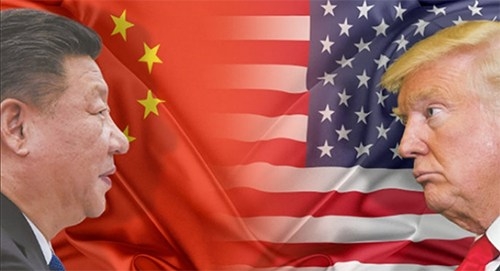



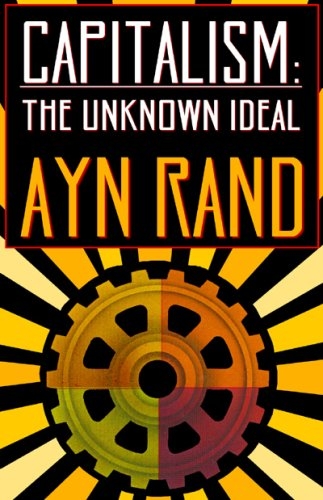 Sa vie bascule durant les années 1945-60, où elle devient une philosophe à la mode, soutenue par quantité de financiers et de littérateurs juifs, cyniques et conquérants. Durant les années 1960, un parent de l’épouse de son amant, Leonard Peikoff, anime le Mouvement objectiviste, à la gloire de la Dame.
Sa vie bascule durant les années 1945-60, où elle devient une philosophe à la mode, soutenue par quantité de financiers et de littérateurs juifs, cyniques et conquérants. Durant les années 1960, un parent de l’épouse de son amant, Leonard Peikoff, anime le Mouvement objectiviste, à la gloire de la Dame.
 « Je reproche aux miséricordieux de manquer facilement de pudeur, de délicatesse, de ne pas savoir garder les distances. La compassion prend trop vite l’odeur de la populace. Surmonter la pitié, c’est une vertu aristocratique » (Nietzsche, Ecce Homo, de 1888). La compassion est une « valeur amorale » et la charité – le don gratuit, sans espoir de réciprocité – une « morale d’esclaves »… une autre analyse en ferait plutôt une valeur de Seigneur moral ! « Les horreurs de la réalité sont infiniment plus nécessaires que ce petit bonheur qu’on appelle “la bonté” », cette bonté que Friedrich, solitaire, aigri par son insuccès en terres germaniques, assimile à un hédonisme moral (même source). Il fait de la magnanimité une « vengeance sublimée »… alors qu’elle est surtout une forme subtile de mépris.
« Je reproche aux miséricordieux de manquer facilement de pudeur, de délicatesse, de ne pas savoir garder les distances. La compassion prend trop vite l’odeur de la populace. Surmonter la pitié, c’est une vertu aristocratique » (Nietzsche, Ecce Homo, de 1888). La compassion est une « valeur amorale » et la charité – le don gratuit, sans espoir de réciprocité – une « morale d’esclaves »… une autre analyse en ferait plutôt une valeur de Seigneur moral ! « Les horreurs de la réalité sont infiniment plus nécessaires que ce petit bonheur qu’on appelle “la bonté” », cette bonté que Friedrich, solitaire, aigri par son insuccès en terres germaniques, assimile à un hédonisme moral (même source). Il fait de la magnanimité une « vengeance sublimée »… alors qu’elle est surtout une forme subtile de mépris.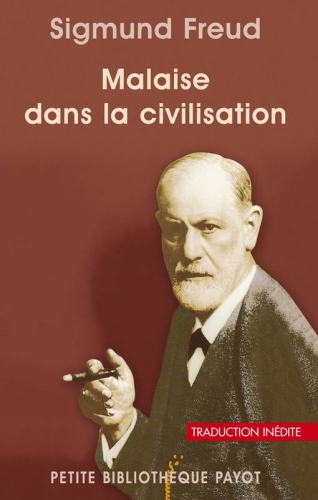 Dans son Malaise dans la civilisation (texte de 1930), le gourou de Vienne, alors en perte de vitesse, étant très contesté par ses concurrents et ses ex-élèves, écrit l’une des perles dont il a le secret : « Tout renoncement à une pulsion devient une source d’énergie pour la conscience », alors qu’elle ne fait généralement qu’alimenter la puissance d’une autre pulsion. Ne pas reprendre du gâteau fut une source d’intime satisfaction pour le stoïcien romain ; ne pas violer une jolie femme restera toujours une source d’honneur pour un homme.
Dans son Malaise dans la civilisation (texte de 1930), le gourou de Vienne, alors en perte de vitesse, étant très contesté par ses concurrents et ses ex-élèves, écrit l’une des perles dont il a le secret : « Tout renoncement à une pulsion devient une source d’énergie pour la conscience », alors qu’elle ne fait généralement qu’alimenter la puissance d’une autre pulsion. Ne pas reprendre du gâteau fut une source d’intime satisfaction pour le stoïcien romain ; ne pas violer une jolie femme restera toujours une source d’honneur pour un homme. Se réclamant officiellement de « l’objectivité », la dame a fourni à ses lecteurs des analyses très « subjectives » de tout ce qu’elle a traité. Plutôt que les rhapsodies très lyriques de la romancière-philosophe, c’est le pavé de Leonard Peikoff (1991) qui explique le mieux les concepts assez rudimentaires de la dame, qui a tenté d’amalgamer le cynisme de « Stirner » et le délire mégalomaniaque du Nietzsche de ses dernières années d’éveil cérébral aux théories sommaires des économistes ultralibéraux des XVIIIe et XIXe siècles.
Se réclamant officiellement de « l’objectivité », la dame a fourni à ses lecteurs des analyses très « subjectives » de tout ce qu’elle a traité. Plutôt que les rhapsodies très lyriques de la romancière-philosophe, c’est le pavé de Leonard Peikoff (1991) qui explique le mieux les concepts assez rudimentaires de la dame, qui a tenté d’amalgamer le cynisme de « Stirner » et le délire mégalomaniaque du Nietzsche de ses dernières années d’éveil cérébral aux théories sommaires des économistes ultralibéraux des XVIIIe et XIXe siècles.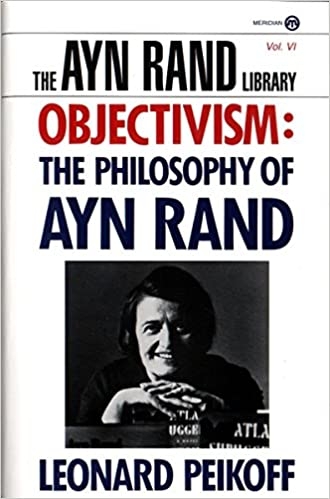 Chaque être humain est libre de butiner là où il trouve son bien, libre également de crier Au génie !, libre de vouloir faire partager son admiration. Toutefois, nier toute valeur à la compassion et repousser l’altruisme et la pitié, au profit de l’individualisme forcené ou d’un darwinisme social quelque peu absurde, ce sont de curieuses attitudes, peu enthousiasmantes.
Chaque être humain est libre de butiner là où il trouve son bien, libre également de crier Au génie !, libre de vouloir faire partager son admiration. Toutefois, nier toute valeur à la compassion et repousser l’altruisme et la pitié, au profit de l’individualisme forcené ou d’un darwinisme social quelque peu absurde, ce sont de curieuses attitudes, peu enthousiasmantes. B. Plouvier : Le dérangement du monde ou des erreurs et des hommes, L’Æncre, 2016
B. Plouvier : Le dérangement du monde ou des erreurs et des hommes, L’Æncre, 2016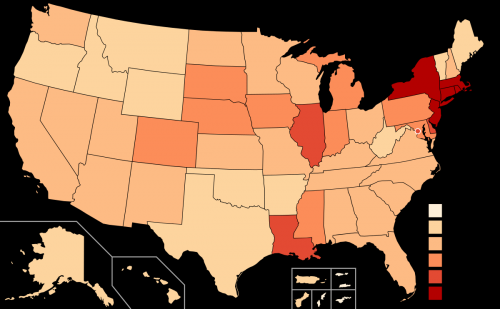








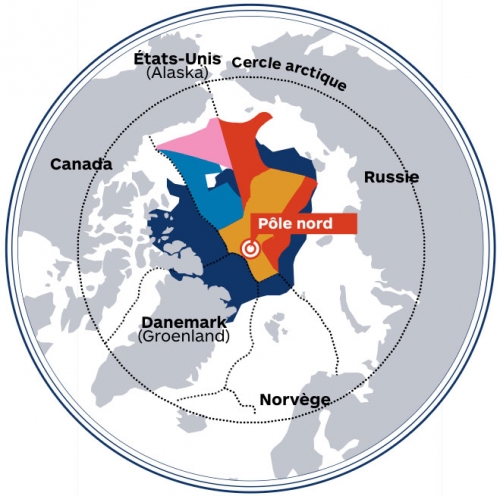





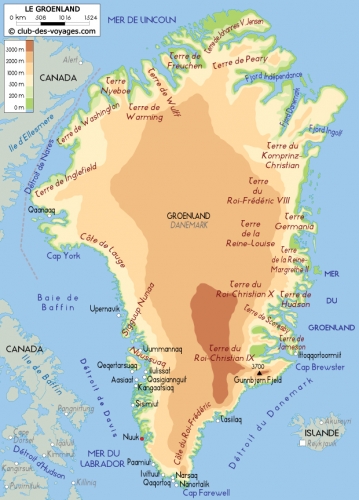



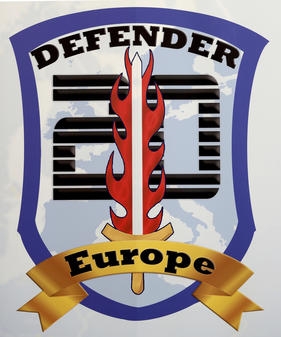 Dans une tribune, une dizaine de militaires de haut rang ayant quitté le service et regroupés au sein du Cercle de réflexion interarmées, s’inquiètent de la participation de la France au prochain exercice militaire de l’OTAN.
Dans une tribune, une dizaine de militaires de haut rang ayant quitté le service et regroupés au sein du Cercle de réflexion interarmées, s’inquiètent de la participation de la France au prochain exercice militaire de l’OTAN.

![defendereurope20_bremerhaven_2[3300]-HcKsR2.jpg](http://euro-synergies.hautetfort.com/media/02/02/2832104459.jpg)




 L’historien français Jacques Benoist-Méchin (1901 – 1983) relate avec une grande précision comment les deux chefs d’Etat ont noué ce marchandage du siècle. Le résultat de cette discussion s’articule en quatre points : 1) la stabilité de l’Arabie saoudite fait partie des « intérêts vitaux » des États-Unis qui assurent, en contrepartie, la protection inconditionnelle de la famille Saoud et accessoirement celle du Royaume contre toute menace extérieure éventuelle ; 2) par extension, la stabilité de la péninsule arabique et le leadership régional de l’Arabie saoudite font aussi partie des « intérêts vitaux » des États-Unis ; 3) en contrepartie, le Royaume garantit l’essentiel de l’approvisionnement énergétique américain, la dynastie saoudienne n’aliénant aucune parcelle de son territoire.
L’historien français Jacques Benoist-Méchin (1901 – 1983) relate avec une grande précision comment les deux chefs d’Etat ont noué ce marchandage du siècle. Le résultat de cette discussion s’articule en quatre points : 1) la stabilité de l’Arabie saoudite fait partie des « intérêts vitaux » des États-Unis qui assurent, en contrepartie, la protection inconditionnelle de la famille Saoud et accessoirement celle du Royaume contre toute menace extérieure éventuelle ; 2) par extension, la stabilité de la péninsule arabique et le leadership régional de l’Arabie saoudite font aussi partie des « intérêts vitaux » des États-Unis ; 3) en contrepartie, le Royaume garantit l’essentiel de l’approvisionnement énergétique américain, la dynastie saoudienne n’aliénant aucune parcelle de son territoire. 




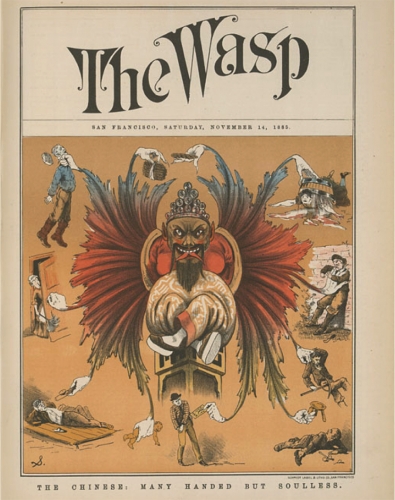
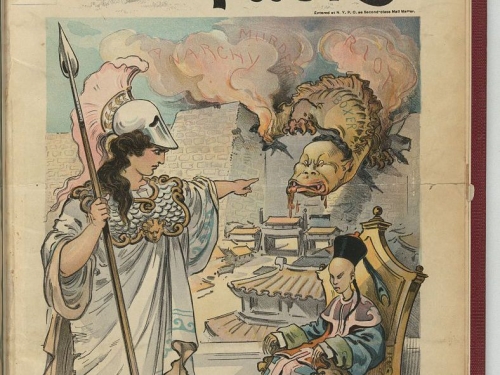
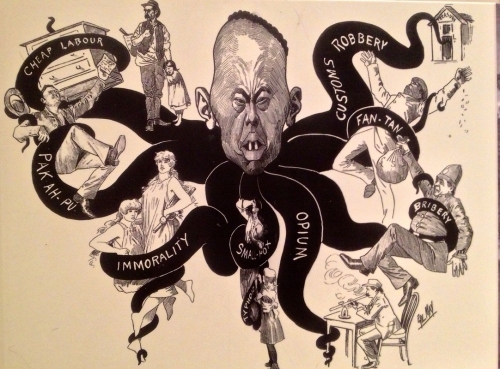

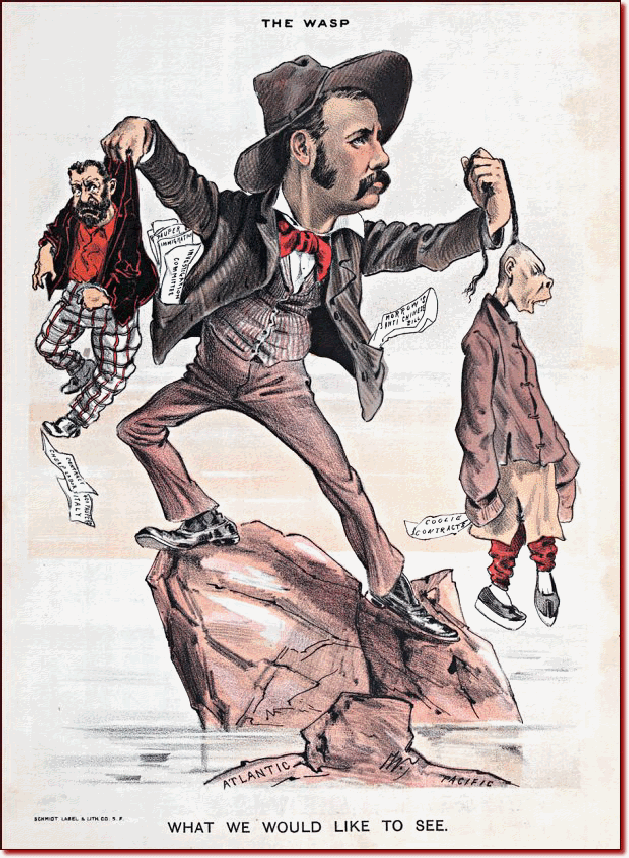
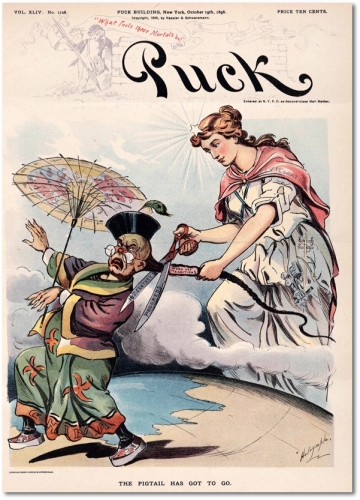
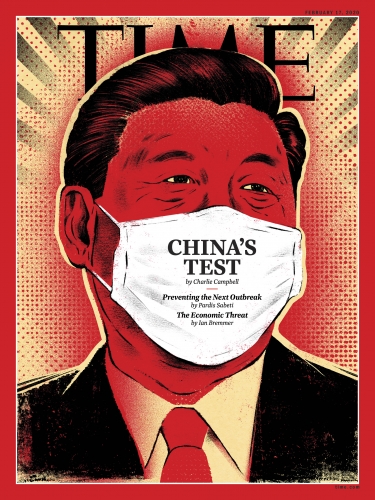
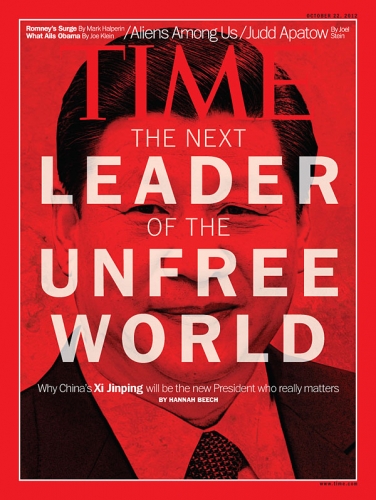
 Découvrez ce petit âne mignon sur la droite.
Découvrez ce petit âne mignon sur la droite.  En 1995, la journaliste américaine Laurie Garrett a publié un excellent livre intitulé «The Coming Plague: Newly Emerging Diseases in a World Out of Balance» dans lequel elle a expliqué pourquoi et même comment une pandémie mondiale émergerait naturellement en raison de la nature même de notre société moderne. Je recommande fortement ce livre en dépit du fait qu’il a maintenant un quart de siècle : il est très bien écrit, facile à lire et il est très convaincant en disant que de telles pandémies étaient inévitables, et sans besoin de faire appel aux théories non confirmées de la guerre biologique.
En 1995, la journaliste américaine Laurie Garrett a publié un excellent livre intitulé «The Coming Plague: Newly Emerging Diseases in a World Out of Balance» dans lequel elle a expliqué pourquoi et même comment une pandémie mondiale émergerait naturellement en raison de la nature même de notre société moderne. Je recommande fortement ce livre en dépit du fait qu’il a maintenant un quart de siècle : il est très bien écrit, facile à lire et il est très convaincant en disant que de telles pandémies étaient inévitables, et sans besoin de faire appel aux théories non confirmées de la guerre biologique. 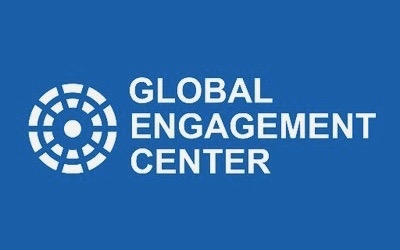




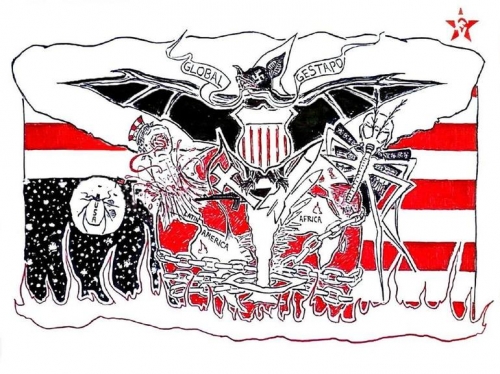
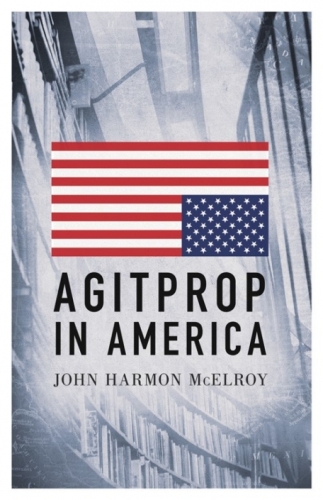 Agitprop in America
Agitprop in America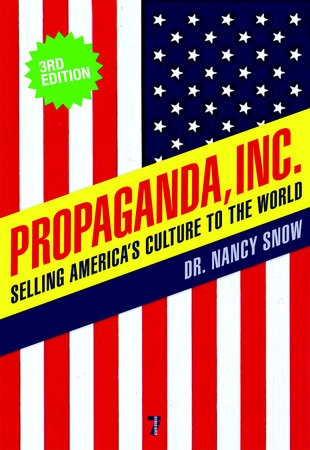 The book opens with the contention that “since the 1960s Marxists and their sympathizers in America have been using agitprop (an integration of intense agitation and propaganda invented by Lenin) to destroy America’s culture and build Cultural Marxism. To do this, agitprop has changed American speech and manipulated cultural values and beliefs.” American history has been rewritten “to make it into a Marxian tale of unmitigated oppression.” American contemporary society has been reinterpreted as the story of “one biologically defined ruling class (straight White males) “victimizing” all other biologically defined classes.” These Marxist dogmas “are causing the destruction of America’s exceptional culture.”
The book opens with the contention that “since the 1960s Marxists and their sympathizers in America have been using agitprop (an integration of intense agitation and propaganda invented by Lenin) to destroy America’s culture and build Cultural Marxism. To do this, agitprop has changed American speech and manipulated cultural values and beliefs.” American history has been rewritten “to make it into a Marxian tale of unmitigated oppression.” American contemporary society has been reinterpreted as the story of “one biologically defined ruling class (straight White males) “victimizing” all other biologically defined classes.” These Marxist dogmas “are causing the destruction of America’s exceptional culture.”

 The final section of the book consists of five short chapters on differing subjects. The first is a commentary on “The Failure of Marxism in the USSR and Successes of PC Marxism in America” which combines an interesting historical overview with a quite strident attack on the Obama years. The next chapter is a brief but lucid essay on how agitprop and PC Marxism has influenced U.S. government spending. The third, and shortest chapter in this section is an attempted rebuttal of the idea that America has become an imperialist nation. I tend to disagree with McElroy somewhat here, not because I believe America has an empire in the conventional sense, but because I believe it’s self-evident that elements of the U.S. government, most notably the neocons, have increasingly steered the country into a foreign interventionist position built around the idea of sustaining global finance capitalism and the state of Israel. Since McElroy’s musings on this topic are limited to a few pages, I was, however, spared any lasting distaste.
The final section of the book consists of five short chapters on differing subjects. The first is a commentary on “The Failure of Marxism in the USSR and Successes of PC Marxism in America” which combines an interesting historical overview with a quite strident attack on the Obama years. The next chapter is a brief but lucid essay on how agitprop and PC Marxism has influenced U.S. government spending. The third, and shortest chapter in this section is an attempted rebuttal of the idea that America has become an imperialist nation. I tend to disagree with McElroy somewhat here, not because I believe America has an empire in the conventional sense, but because I believe it’s self-evident that elements of the U.S. government, most notably the neocons, have increasingly steered the country into a foreign interventionist position built around the idea of sustaining global finance capitalism and the state of Israel. Since McElroy’s musings on this topic are limited to a few pages, I was, however, spared any lasting distaste.
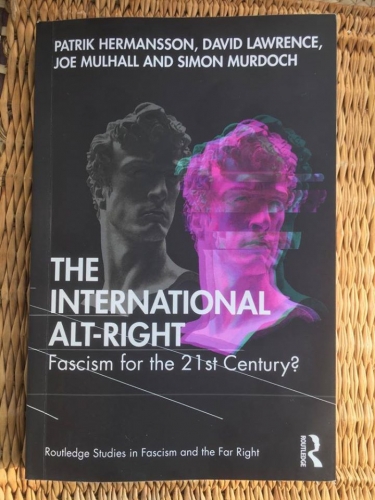
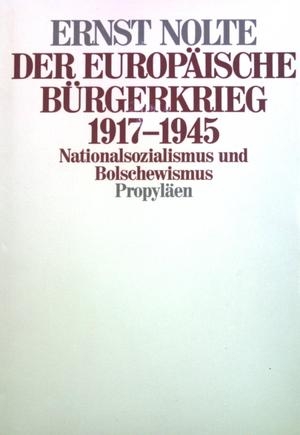 E' un fenomeno irripetibile, inquadrabile in tutto e per tutto nel XX secolo e figlio della palingenesi collettiva della prima guerra mondiale, che forgiò una generazione in quella che Benito Mussolini definirà come “trincerocrazia”, mito fondativo di una nuova gioventù che tornava a casa dopo quattro anni di trincea. Il fascismo mussoliniano è figlio della Grande Guerra, l’evento che ha mutato per sempre la storia, l’Europa e il mondo, e senza la quale non avremmo avuto né il nazionalsocialismo in Germania né la Rivoluzione d'Ottobre in Russia. E' nel suo mezzo, e qui aveva ragione Ernst Nolte, che scoppia la “europäische Bürgerkrieg” (1917 - 1945) fra due diverse concezioni del mondo, fra quella materialista storica incarnata nel marxismo-leninismo a quella romantica, idealista e volontarista incarnata dai fascismi. E' quel carnaio a creare l'idea che sarebbe nata un’aristocrazia guerriera venuta fuori direttamente dalla gerarchia della trincea, la trincerocrazia, cioè
E' un fenomeno irripetibile, inquadrabile in tutto e per tutto nel XX secolo e figlio della palingenesi collettiva della prima guerra mondiale, che forgiò una generazione in quella che Benito Mussolini definirà come “trincerocrazia”, mito fondativo di una nuova gioventù che tornava a casa dopo quattro anni di trincea. Il fascismo mussoliniano è figlio della Grande Guerra, l’evento che ha mutato per sempre la storia, l’Europa e il mondo, e senza la quale non avremmo avuto né il nazionalsocialismo in Germania né la Rivoluzione d'Ottobre in Russia. E' nel suo mezzo, e qui aveva ragione Ernst Nolte, che scoppia la “europäische Bürgerkrieg” (1917 - 1945) fra due diverse concezioni del mondo, fra quella materialista storica incarnata nel marxismo-leninismo a quella romantica, idealista e volontarista incarnata dai fascismi. E' quel carnaio a creare l'idea che sarebbe nata un’aristocrazia guerriera venuta fuori direttamente dalla gerarchia della trincea, la trincerocrazia, cioè
 Diverso il discorso della Nouvelle Droite o la Quarta Teoria Politica di Aleksandr Dugin, che è una riattualizzazione della konservative Revolution, che non punta alla creazione di uno stato totalitario (a differenza del fascismo, che è figlio della modernità) ma piuttosto organico, federale e continentale, pescando dal pre-moderno, dall'arcaismo, dal tradizionalismo, dai valori iperborei, dalle identità ancestrali che il cosiddetto "mondialismo", figlio della post-modernità, sta cancellando. L'alt-right invece è strettamente legata alla mentalità liberale e ai modelli di produzione capitalistici. Insomma, certi storici americani è meglio che studino altro!
Diverso il discorso della Nouvelle Droite o la Quarta Teoria Politica di Aleksandr Dugin, che è una riattualizzazione della konservative Revolution, che non punta alla creazione di uno stato totalitario (a differenza del fascismo, che è figlio della modernità) ma piuttosto organico, federale e continentale, pescando dal pre-moderno, dall'arcaismo, dal tradizionalismo, dai valori iperborei, dalle identità ancestrali che il cosiddetto "mondialismo", figlio della post-modernità, sta cancellando. L'alt-right invece è strettamente legata alla mentalità liberale e ai modelli di produzione capitalistici. Insomma, certi storici americani è meglio che studino altro!





 [ii] Emmanuel Breen, FCPA. La France face au droit américain de la lutte anti-corruption, coll. « Pratique des affaires », Joly éditions, 2017
[ii] Emmanuel Breen, FCPA. La France face au droit américain de la lutte anti-corruption, coll. « Pratique des affaires », Joly éditions, 2017
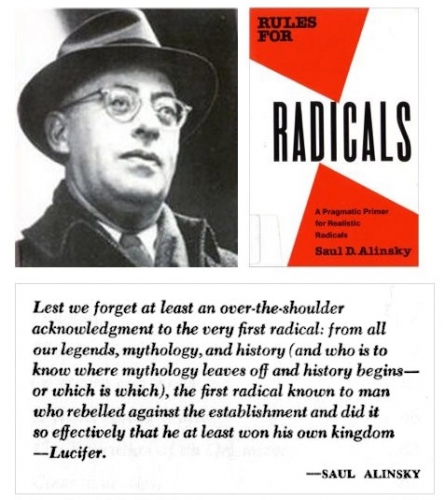

 1) Le pouvoir. Alinsky est loin d’épouser une vision irénique de la démocratie. Le principe primordial de l’organizer est celui du pouvoir. Le pouvoir, soutient-il, est « l’essence même, la dynamo de la vie » (dans certains textes, il ira jusqu’à citer Nietzsche)
1) Le pouvoir. Alinsky est loin d’épouser une vision irénique de la démocratie. Le principe primordial de l’organizer est celui du pouvoir. Le pouvoir, soutient-il, est « l’essence même, la dynamo de la vie » (dans certains textes, il ira jusqu’à citer Nietzsche) Surtout, Alinsky reconnaissait que les valeurs dénoncées par cette jeunesse en colère étaient justement celles auxquelles les pauvres pour lesquels il a milité aspiraient : en 1967, il remarquera : « Les gosses du SDS me disent : ‘Alinsky, tu sais ce que tu fais ? Tu organises les pauvres au nom de valeurs décadentes, ruinées, bourgeoises, et matérialistes.’ Et je me trouve en train de répondre : ‘Vous savez ce qu’ils veulent, les pauvres, dans ce pays ? Ils veulent une part plus grande dans ces valeurs décadentes, ruinées, bourgeoises ».
Surtout, Alinsky reconnaissait que les valeurs dénoncées par cette jeunesse en colère étaient justement celles auxquelles les pauvres pour lesquels il a milité aspiraient : en 1967, il remarquera : « Les gosses du SDS me disent : ‘Alinsky, tu sais ce que tu fais ? Tu organises les pauvres au nom de valeurs décadentes, ruinées, bourgeoises, et matérialistes.’ Et je me trouve en train de répondre : ‘Vous savez ce qu’ils veulent, les pauvres, dans ce pays ? Ils veulent une part plus grande dans ces valeurs décadentes, ruinées, bourgeoises ».
 Situé au croisement de la tradition du « self-made man » et d’une sorte d’autogestion à l’américaine, Alinsky insiste toujours sur la nécessité des pauvres de pourvoir à leurs intérêts, mêmes « bourgeois » et « décadents », et nourrit un profond mépris pour les « libéraux » (au sens américain du terme, donc la gauche) qui, en prétendant connaître les intérêts profonds des couches sociales démunies, ne font que les infantiliser. Mais de là à rejoindre les critiques libérales (au sens européen) de l’Etat-providence ? Rappelons qu’en 1996, le président Clinton, appuyé par les Républicains, adopta la loi sur la « responsabilité personnelle » (Personal Responsibility and Work Opportunity Reconciliation Act, PRWORA), qui supprima de nombreuses allocations destinées aux plus démunis (en particulier celles destinées aux enfants), en les remplaçant, au niveau des Etats fédérés, par une politique dite de « workfare », qui lie le droit aux prestations sociales à l’obligation de travailler (même dans des conditions indignes). Clinton annonça à cette occasion que « l’ère du big government » est terminé aux Etats-Unis. En dépit de son engagement profond pour les pauvres, Alinsky et sa méthode ne constituent-ils pas, par le biais de leur critique des aides gouvernementales au nom du savoir-faire spontané de la communauté, la voie détournée vers le « workfare » ?
Situé au croisement de la tradition du « self-made man » et d’une sorte d’autogestion à l’américaine, Alinsky insiste toujours sur la nécessité des pauvres de pourvoir à leurs intérêts, mêmes « bourgeois » et « décadents », et nourrit un profond mépris pour les « libéraux » (au sens américain du terme, donc la gauche) qui, en prétendant connaître les intérêts profonds des couches sociales démunies, ne font que les infantiliser. Mais de là à rejoindre les critiques libérales (au sens européen) de l’Etat-providence ? Rappelons qu’en 1996, le président Clinton, appuyé par les Républicains, adopta la loi sur la « responsabilité personnelle » (Personal Responsibility and Work Opportunity Reconciliation Act, PRWORA), qui supprima de nombreuses allocations destinées aux plus démunis (en particulier celles destinées aux enfants), en les remplaçant, au niveau des Etats fédérés, par une politique dite de « workfare », qui lie le droit aux prestations sociales à l’obligation de travailler (même dans des conditions indignes). Clinton annonça à cette occasion que « l’ère du big government » est terminé aux Etats-Unis. En dépit de son engagement profond pour les pauvres, Alinsky et sa méthode ne constituent-ils pas, par le biais de leur critique des aides gouvernementales au nom du savoir-faire spontané de la communauté, la voie détournée vers le « workfare » ? Mais Obama évoque le pouvoir de séduction qu’exerça sur lui le langage alinskien au cours de sa formation comme organizer : « L’action, le pouvoir, l’intérêt particulier. J’aimais ces concepts. Ils témoignaient d’un certain réalisme, d’un refus temporel pour le sentiment ; la politique, et non la religion ».
Mais Obama évoque le pouvoir de séduction qu’exerça sur lui le langage alinskien au cours de sa formation comme organizer : « L’action, le pouvoir, l’intérêt particulier. J’aimais ces concepts. Ils témoignaient d’un certain réalisme, d’un refus temporel pour le sentiment ; la politique, et non la religion ».